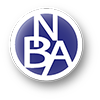Lucas Timpe
Forum Replies Created
-
AuthorPosts
-
Lucas Timpe
ParticipantAny luck with these questions?
Lucas Timpe
ParticipantThe course is done although it is still being edited as needed. I'll have to see if I can find out the other questions you asked. Give me a couple days.
Cindi
Lucas Timpe
ParticipantSorry about the delay in responding. I missed the fact that you posted another question.
After going through the first review process, the idea of using the 7th transcriber-defined indicator was shot down. It was deemed that assigning a specific meaning to one of the transcriber-defined indicators was not a good idea. The ICEB code maintenance committee (the "owners" of UEB) have been asked to create a base reference indicator. In the meantime, what to do with marginal labels?
We are proposing that a key be created for the labels themselves using the UEB icon concept (dot 4, dots 1246 before letters representing the key). Then use the braille grouping indicators (dots 126, 345 from section 3.4) to surround the text that the label applies to. You will likely need grade 1 indicators preceding the braille grouping indicators. Again, this is PROPOSED and must still go through another review. Of course, the symbols must all be explained in a TN before the text.
Cindi
Lucas Timpe
ParticipantThat was a misstatement. Braille Formats 2011 does say that foreign words in English context are contracted. Forgive the slip.
Lucas Timpe
ParticipantI have a student that is being instructed by an outside source that his format in this situation is wrong. He needed validation from an outside source to legitimize his claim which you have done. Thank you for your help.
edited by Lennie M on 10/1/2013Lucas Timpe
ParticipantI'm confused by this latest post. In your commentary you state that you have concluded that it is no longer to have chapter or section number on a line by itself.
I agree with you for the reasons you stated. Therefore, I don't understand the conclusion that you apparently reached, that sample #2 is the better choice. Sample #2 does indeed put the section number on a line by itself and I think the result is not particularly desirable. I would go with Sample #1.
--Joanna
Lucas Timpe
ParticipantI'm sorry to dwell on this, but there is still confusion. You stated that ALL of the blue words are underlined (with the one exception). But in your example, anxiety is blue, but not underlined.
It makes a difference. The point here is that we want to avoid using the two font attributes in a word because it creates a lot of clutter to read through. It would help a LOT if all the blue words are underlined, but what about "anxiety."? It is blue, but not underlined. Please clarify.
--Joanna
Lucas Timpe
ParticipantAll of the blue words are also underlined with the exception of 1 word. This word is black and underlined but it seems this was a print error. The reason we know this is due to the fact that the Spanish glossary shows it's equivalent word underlined and in blue. So in summary, yes and no.
Lucas Timpe
ParticipantThank you for the help!
Lucas Timpe
Participantthe question is repeated in the attachment along with examples. I should have included them in my first post and didn't. Sorry about that.
Lucas Timpe
ParticipantThere are many times when photo credits have no direct reference to their corresponding photos located somewhere in the print. How it one to determine which credit to omit?
Also what if (as in our case) you have a credit citation (a copyright) right below the photo but no caption for that photo? Based on your answer and also the way Rule 6.21a and 9.5.4 read, it is impled we are to omit the photo when there is no caption and it is not referenced in print. Ultimaly requiring us to omitting the credit as well. Is this a correct interpretation?
-
AuthorPosts
